In preparation for having some of our rooms plastered, one of the things we’ve had to do is remove some of our radiators. Surprisingly removing a radiator is actually a really easy and quick thing to do – if you know how to remove a radiator.
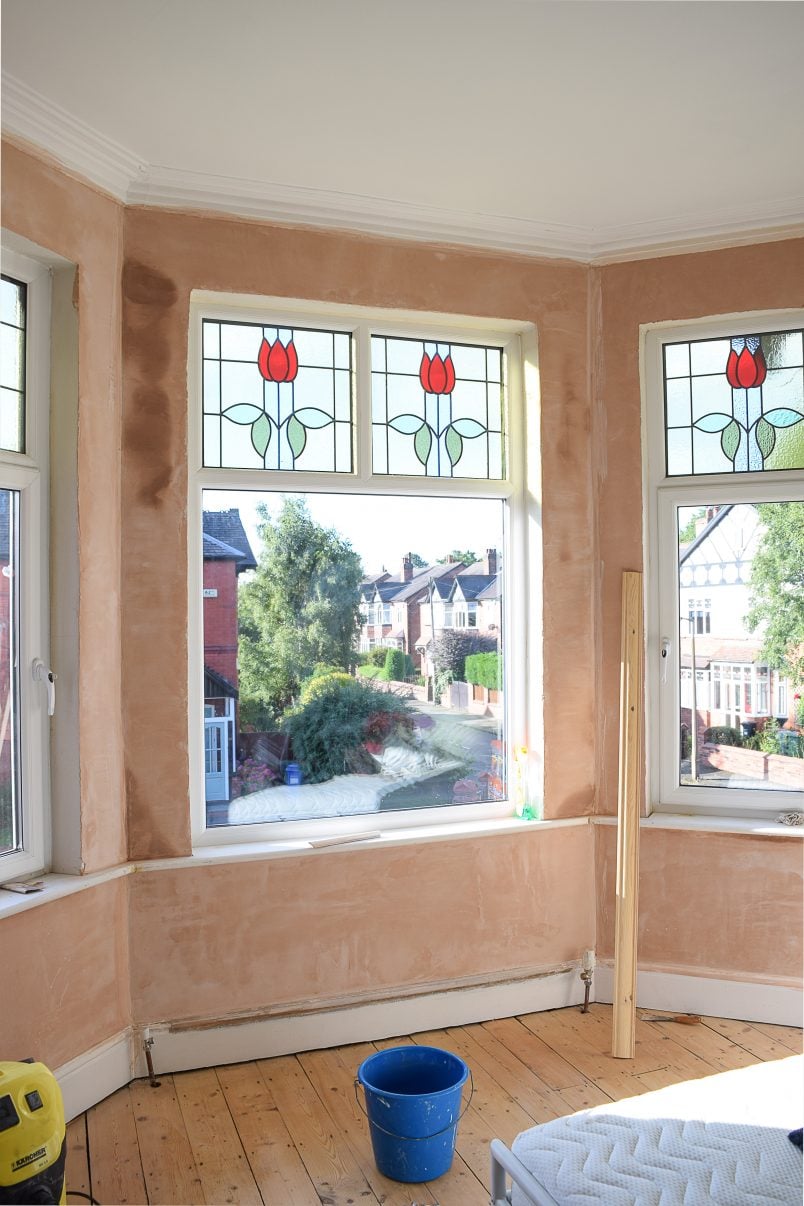
These are the tools you’ll need to remove a radiator:
This post contains affiliate links. We only recommend products we love and think that you will, too! Read our full disclaimer here.
- 2 pipe wrenches or adjustable spanners
- Compression cap
- Bowl & bucket
- Towels or cloths – just in case
- Radiator key
This is how to remove a radiator:
It doesn’t matter if you’re removing a radiator for painting or plastering or if you’re removing a radiator because you want to switch it out. The steps to remove a radiator from the wall are always the same.
1. Get prepared
Start by turning off your heating and the water cool down. Then get your tools prepared so they’re all within easy reach.
2. The thermostatic valve
Start by turning the thermostatic valve off.
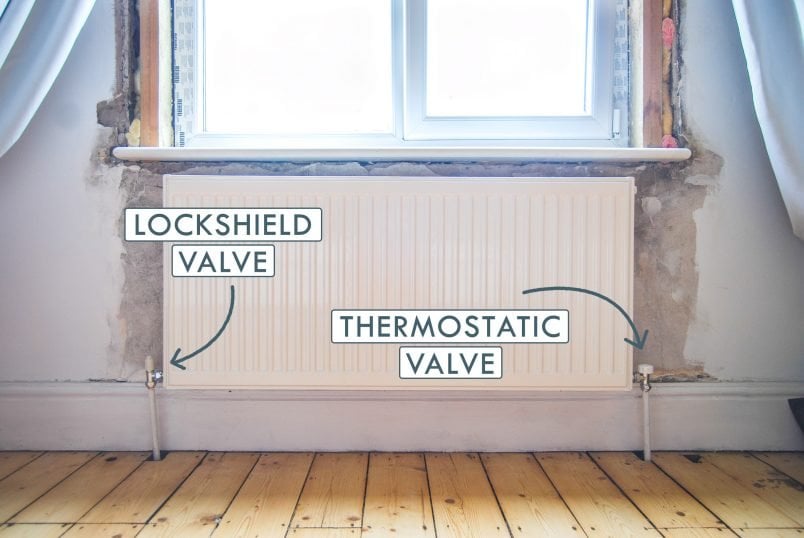
3. The lockshield valve
Now remove the plastic cap off the lockshield valve and turn the little spindle inside it clockwise.
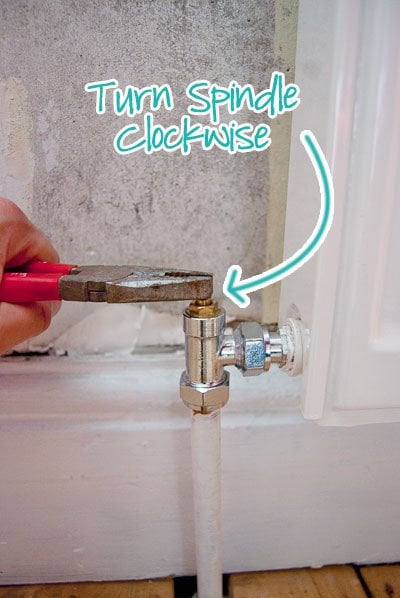
4. Unscrew the nuts & bolts
Using one of the spanners, hold the thermostatic valve in place and use the second spanner to loosen the nut that holds the valve onto the radiator. Have your bowl ready – water will start pouring out of the radiator as soon as it’s loose.
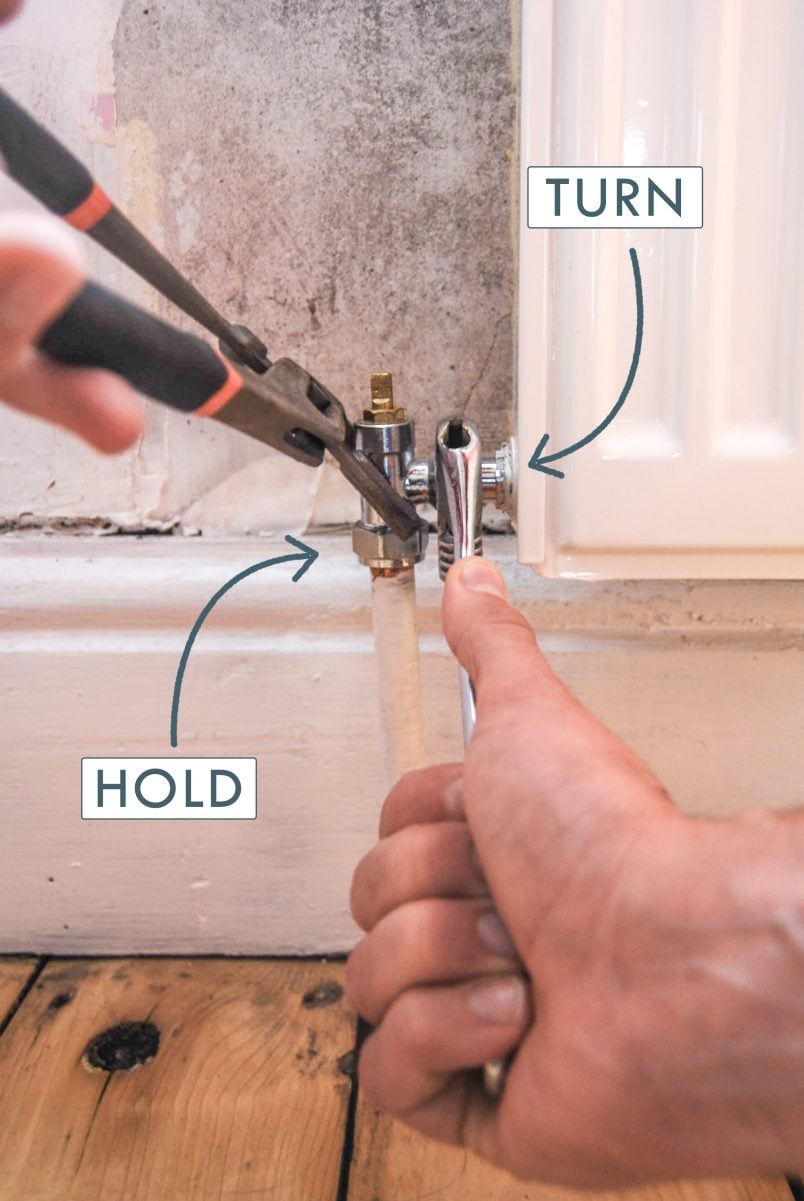
5. Empty the water
Now it’s just a matter of waiting till all of the water has run out of the radiator.
The amount of water in the radiator will be much too much for your little bowl, so this is where the larger bucket comes in handy. Just keep emptying the bowl into the bucket until there’s no more water coming out of the radiator.
You’ll obviously have to pop your finger on the opening that the water is coming out of before moving your bowl!
When the flow of water starts to slow, use the radiator key to let some more air into the radiator. Adding air will help the water in the radiator flow out faster.
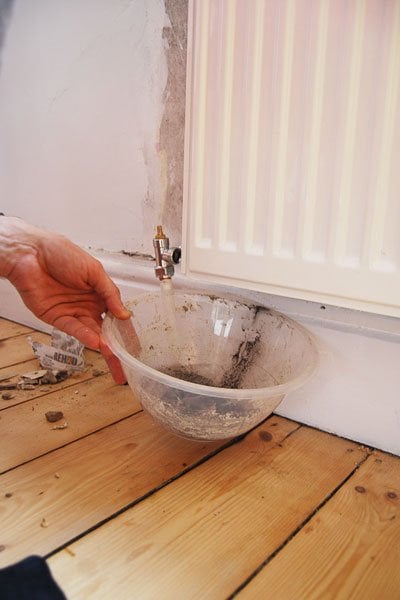
6. Unscrew the other side of the radiator
When the water has finally stopped flowing, you can loosen the radiator on the other side.
Use the same method as before – hold the lockshield valve in place with one spanner and loosen the nut with the other. Be careful, as there will still be some water in the radiator. Always have your bowl and towel at hand!
7. Remove the radiator
All that’s left to do is to carefully lift the radiator off the wall and empty the remaining water into the bucket.
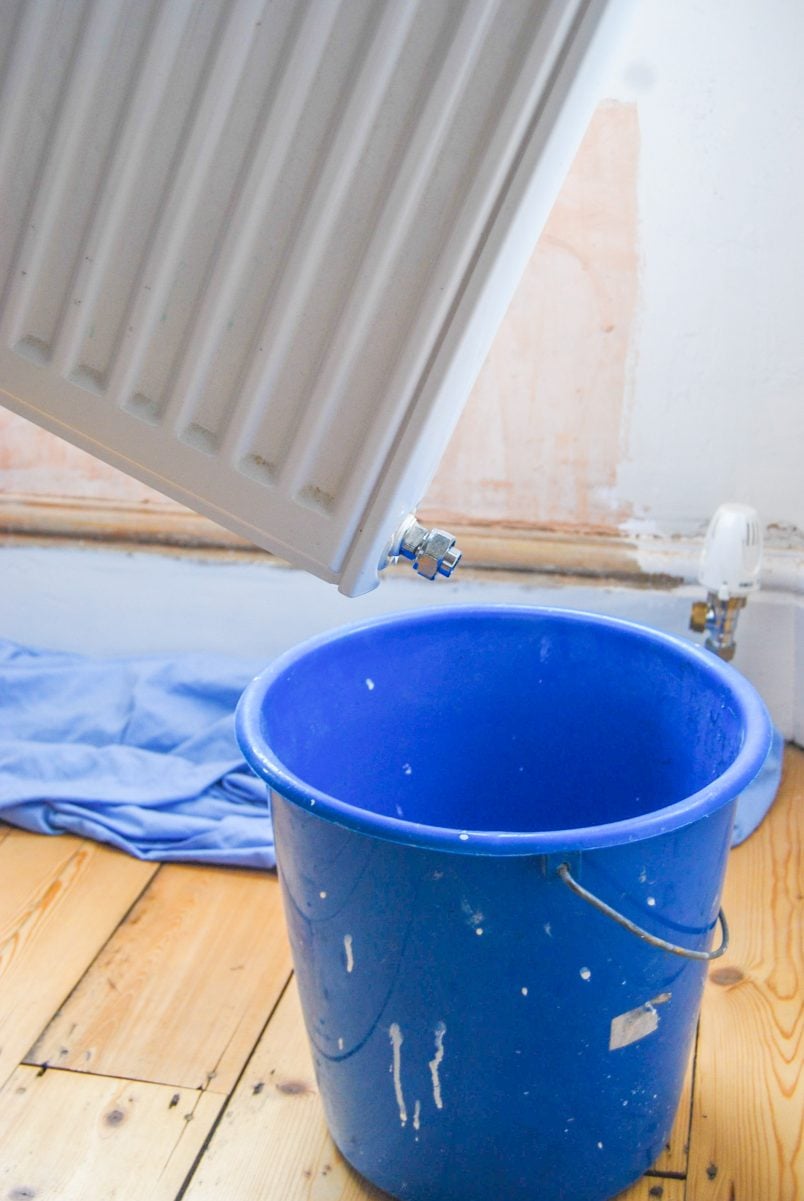
8. Secure the valves
To make sure that no water can escape when your radiator is off the wall (especially if you’re leaving it off for a while) screw a compression cap to the side with the thermostatic valve.
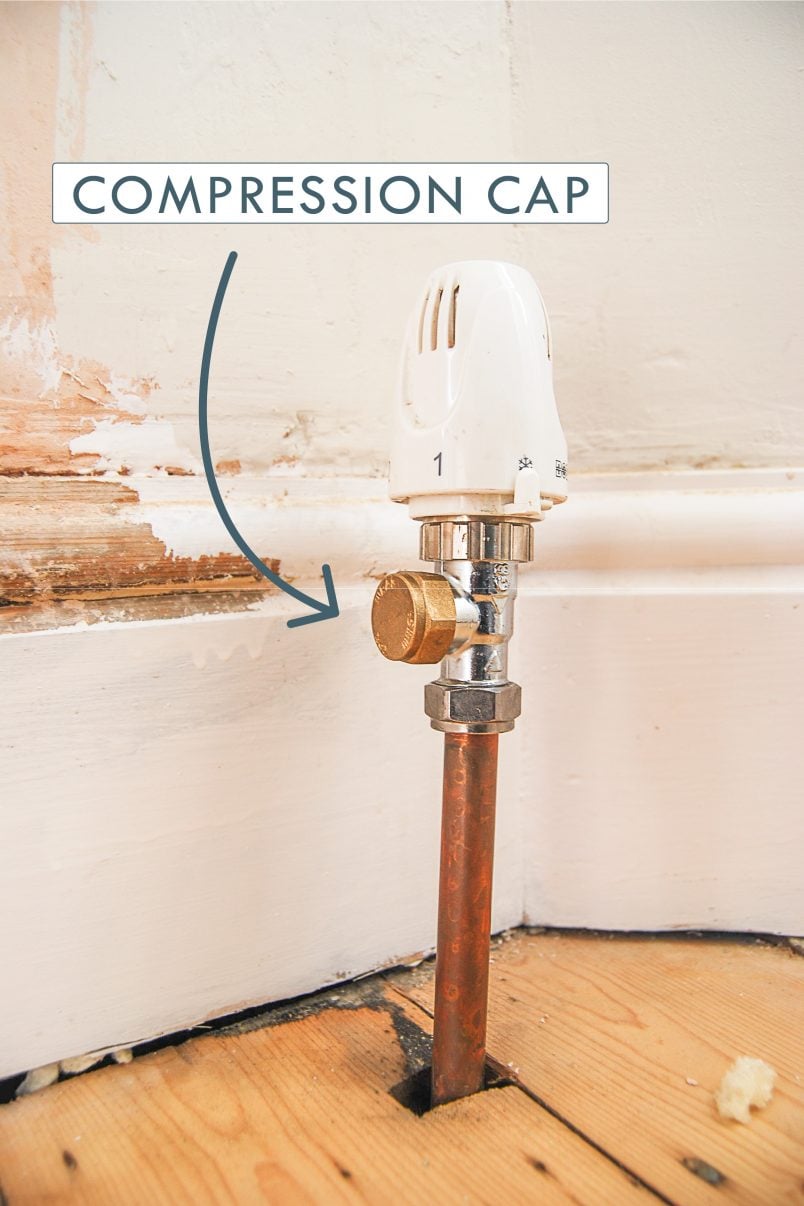
That’s all there is to it. It’s such an easy job that probably took about 20 minutes to complete and – as DIYers – it’s definitely something we’d recommend two people doing as it just makes life much easier when emptying the bowl.
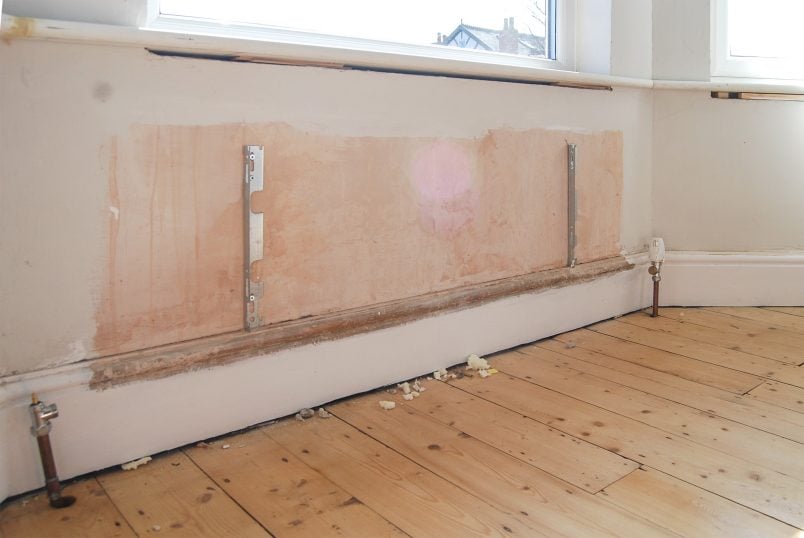
Now we can finally finish painting the wall and skirting board behind the radiator!
And, if you have really ugly radiators that you don’t want to replace just yet, you’ll definitely want to check out our guide to building a radiator cover yourself. It’s a super beginner-friendly project that anyone can do!
Have you ever removed a radiator? Have you ever tackled a project that turned out to be much easier than you expected?

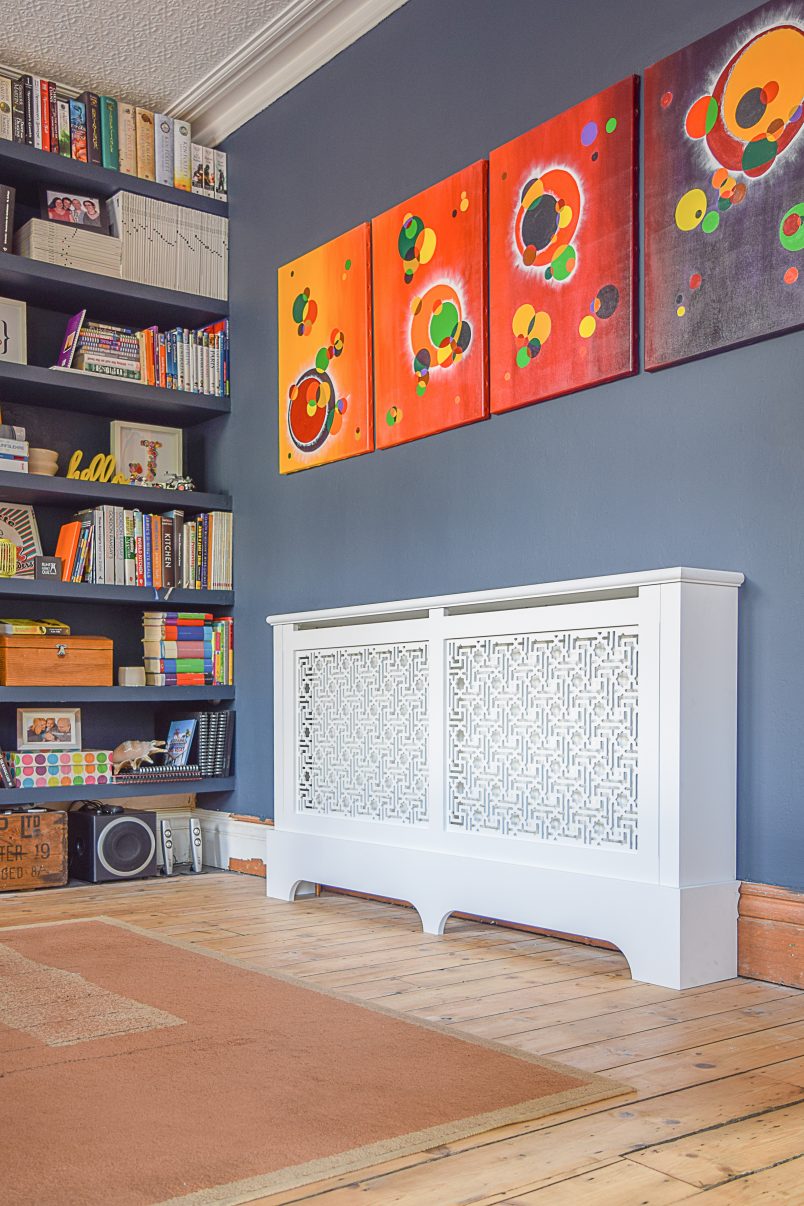
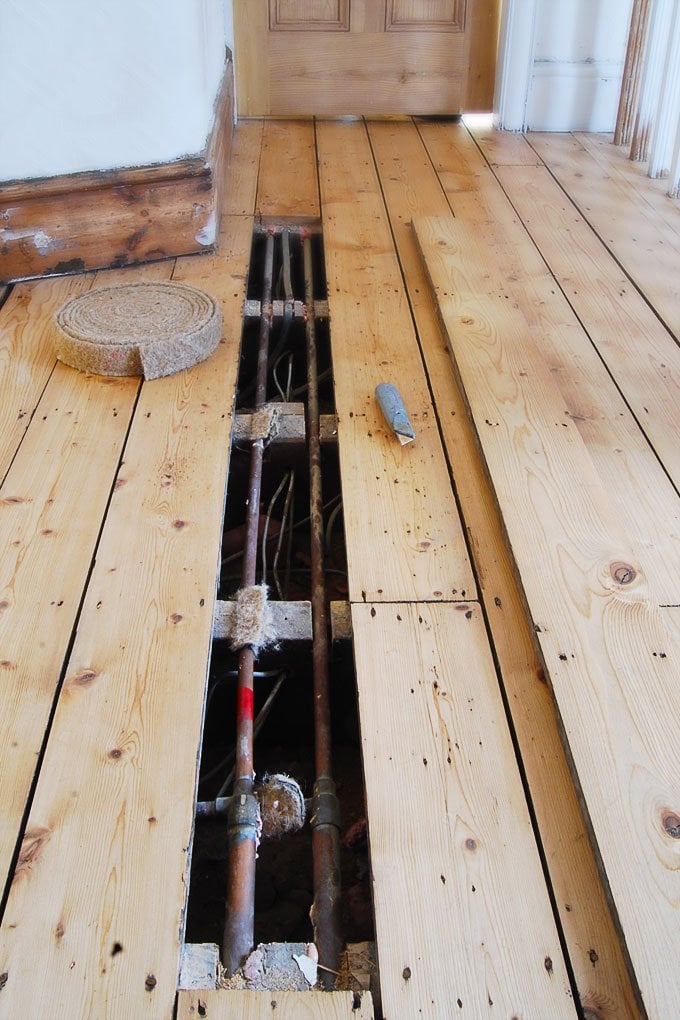
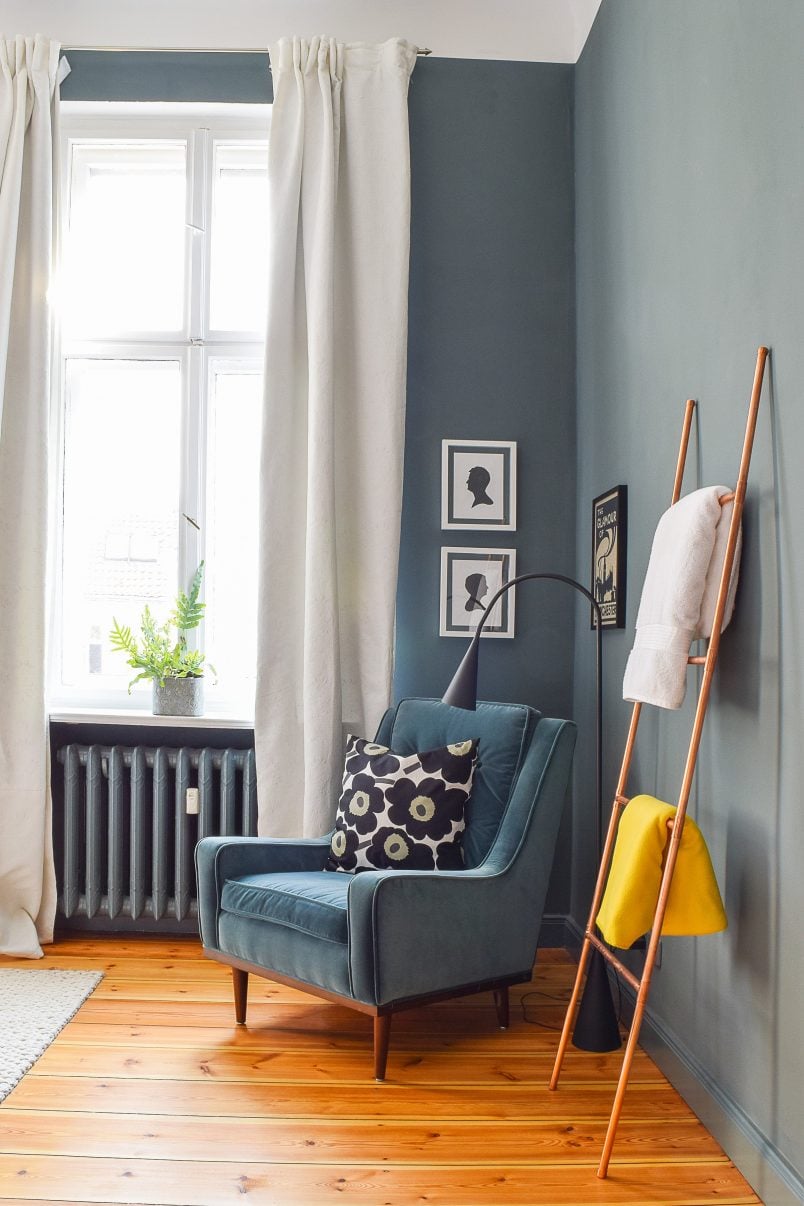
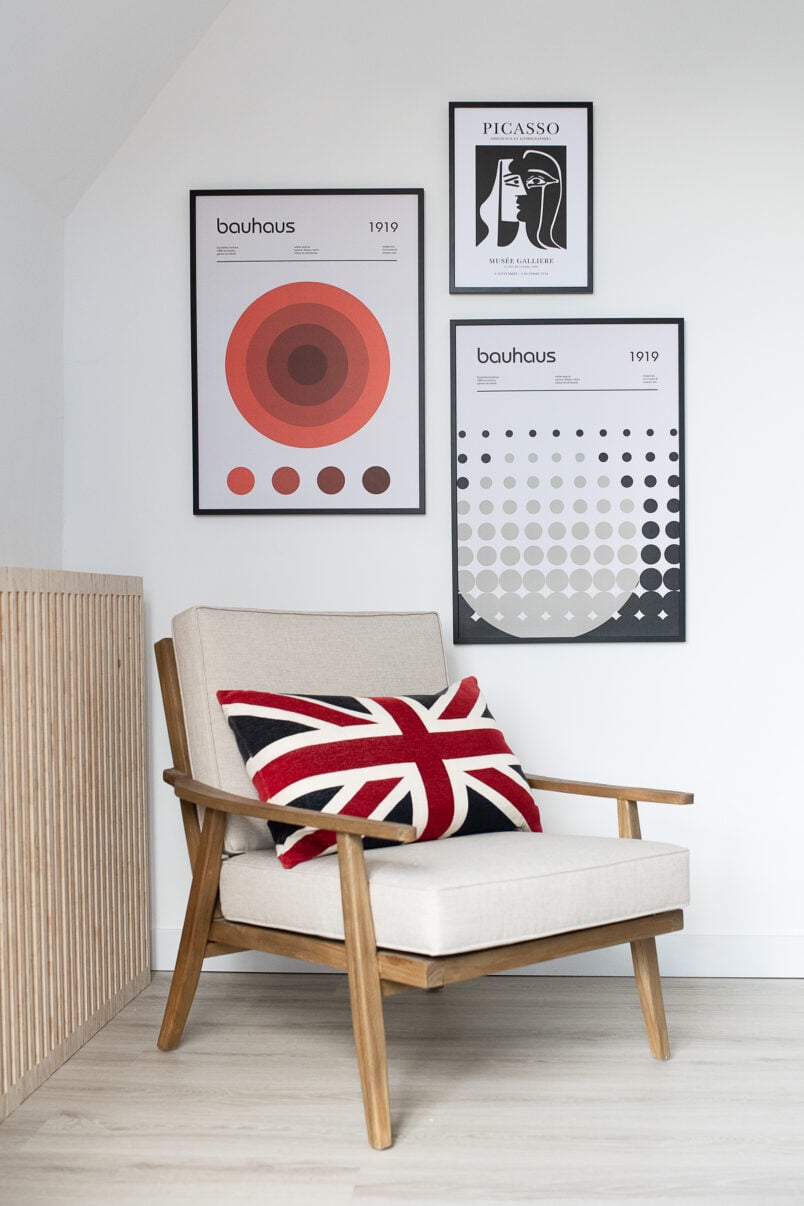

Paul martin says
Nice one radiator is off no mess thank you
Christine says
Fantastic, Paul! Glad it worked well for you!
Cx
Rae says
If you use a large, deep roasting pan or one of those rectangular cheap ones, it fits against the wall and pipe better, and you can just use a cup to transfer water to a bucket when it gets half full instead of stopping the flow and potentially making a mess. Thanks for the tutorial!
Christine says
That’s such a clever tip! Thanks for sharing it, Rae!
Cx